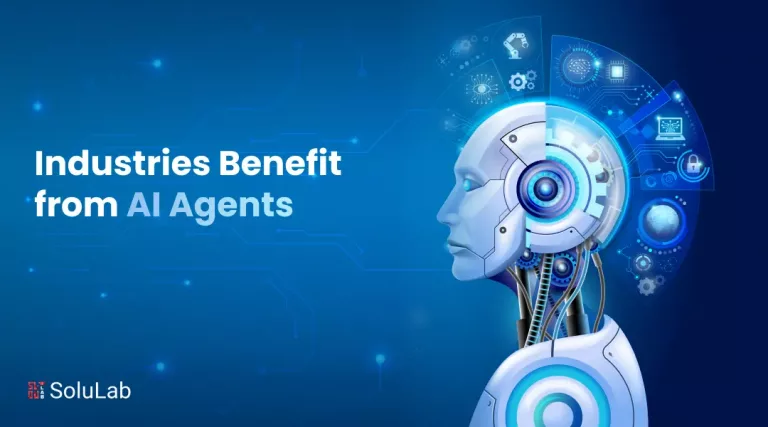
No doubt, there are tremendous opportunities for data scientists to disrupt banking, insurance, health care, retail, and the government sector. But does the same hold true for supply chain professionals? As the two fields begin to intersect, the answer is increasingly “yes.” Read on to learn how advances in data science are solving some of the most complex supply chain management challenges and increasing the demand for professionals in the field.
A New Era of Supply Chain Management
Supply chain management saw tremendous progress in the ‘90s, driven by academic research and large corporations like Walmart and Proctor & Gamble. While some companies are still on their way to implementing best practices, the global supply chain is already undergoing another major transformation enabled by Big Data and powered by data science teams using advanced technologies like artificial intelligence, blockchain, and robotics.
These promising advancements—often marked and summarized by terms like “Industry 4.0,” “Supply Chain 4.0,” and “Supply Chain Digitization”—promise to shorten replenishment and lead times, fully automate demand forecasting, lower inventories, and improve on-time production and delivery. In short, these advancements intend to make the supply chain more agile, predictable, and cost efficient for organizations, leading to overall higher profitability and competitiveness.
Data Science is Turning Supply Chain into a Strategic Advantage
Today’s executives have rightly realized the need to move supply chain higher up on their priority list. What has traditionally been seen as a purely operational function is now emerging as a strategic competitive advantage for many industries and businesses. New investments like Internet of Things (IoT) technologies and IT infrastructure allow companies to gather more data than ever before, enabling them to build applications to tackle continuous business challenges.
Some of the supply chain challenges that data science is helping to solve include:
- Making the supply chain greener to minimize the environmental impact of global sourcing (e.g., shorter distances or consolidated shipments)
- Increasing visibility into the supply chain and response time (e.g., through blockchain)
- Adapting to demographic changes and customer expectations (e.g., free same day deliveries)
- Allowing manufacturers to decrease their product life-cycle times (e.g., through better market insights and smart sourcing) to react to trends and demand more quickly
- Increasing the product portfolio to serve not only the mass market but the entire demand curve (e.g., through mass-customization)
- The future supply chain will get closer to gathering the right information at the right time with the right tool to get the right insights to make the (optimal) real-time decision with minimal human intervention.
So how are AI and data science impacting companies? For supply chain and operations, the major advantage is generated through improved efficiency and lower cost in the following two ways:
- Augmentation: Assisting existing process steps to support human decision-making by providing automated analysis of various scenarios, ultimately helping speed up processes and minimize human error or bias.
- Automation: AI taking over the decision-making function and fully automating the process step.
Moving forward into the future, these efficiencies are expected to increase, allowing faster and improved decision-making and allowing for better visibility into the various supply chain functions.
The Impact of Data Science on Supply Chain Functions
The list of exciting data science applications (and challenges) is endless. Some of the most promising applications that today’s students are working on are expected to disrupt many supply chain functions, including demand forecasting, distribution, call centers, procurement, and pricing.
The list of exciting data science applications (and challenges) is endless. Some of the most promising applications that today’s students are working on are expected to disrupt many supply chain functions, including demand forecasting, distribution, call centers, procurement, and pricing.
Demand Forecasting
With the ability to integrate more data with higher granularity, companies can utilize predictive and prescriptive analysis to improve the accuracy of demand forecasting. This includes driving improvements for finding optimal forecasting aggregation levels, optimizing for various forecasting horizons, or utilizing advanced forecasting algorithms. Today’s companies need to be able to know how promotional activities by customers, competitors, and their own marketing department affect demand over various sales channels.
At the same time, the demand behavior is constantly being changed by external factors like product innovation, trends (e.g., demographic change), or governments (e.g., tariffs or new laws) to readjust their own product portfolio to the market demand. The improvement in demand forecasting accuracy directly translates to improved performance for production scheduling and the correct inventory safety and cycle stock (e.g., more accurate data and automated parameter adjustments).
Distribution
Powered by real-time data, a more agile supply chain is able to optimize and reroute shipments that are affected by disruptions (like port congestions or weather) and automatically share these changes along the supply chain and inform direct customers. In distribution centers, more intelligent stocking in the network (e.g., bundling of shipments), improved sorting, as well as improved visual inspection allows businesses to lower cost and increase on-time delivery.
Call Centers
Data science and AI enable maximization of customer support (to suppliers, consumers, wholesalers, and sales forces) through technologies like chatbots or voice-activated assistants to provide more accurate information more quickly (e.g., expected delivery times). AI, blockchain, and advances in data integration will also support the detection of warranty and procurement fraud. “Smart contracts” will help to solve disputes quicker and increase compliance.
Sourcing/Procurement
Cognitive sourcing or procurement naturally is a data-rich function and will support improved supplier selection, including a fluid re-evaluation of opportunities. Augmentation and automation in this area will drive responsiveness and speed in product development cycles, exploit and increase production efficiencies to lower costs, increase product quality, and foster deeper relationships with suppliers.
Pricing
Dynamic pricing will allow companies to further maximize exploration of the customer demand curve, react to market behavior, and gain market growth. Furthermore, it will allow companies to control demand according to the real-time capacity of the supply chain and the best revenue stream.
Overall, this is an exciting time for supply chain professionals and those with data science knowledge to advance the necessary academic research in the area and to develop ideas and industry tools to drive sustainable, practical impact.



